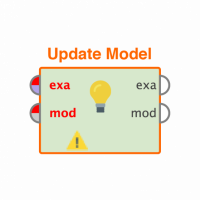Why does log-Transformation give 3% better accuracy with LibSVM?
hi,
I tried a log10-Transformation no my right-skewed dataset, and trained / tested it again with a LibSVM. The results were staggering me, as it is a quite difficult dataset. But the results were 2.5 -3 % better than with not transformed dataset (from 84-85 to 87.6 % better performance..). I also standardized my datasets prior...
how can that be? I mean SVM does not make any distribution assumptions like a GLM or does it?
it would just correspond to a different Kernel function right? I used RBF-kernel, then it would be a RBF-Kernel with ||log(x)-log(x*)|| in the numerator of the rbf kernel function, right?
Best Answer
-
 marcin_blachnik
Member Posts: 61
marcin_blachnik
Member Posts: 61  Guru
Guru
Well
The SVM don't make any assumptions but I guess you use RBF kernel. The RBF kernel has fixed Gamma. When the attributes are squed the Gamma has different influence on low values of the data than on hi values, when you log it you make the gamma to have equal influence in the entire space.
Good preprocessing is very important for SVM model.Best
Maricn
2

 Unicorn
Unicorn
Answers
Great question! I don't know the answer but I will do an incantation for @IngoMierswa and see if he can answer that!
hi,
did you get any answers yet?
Hi, I guess thats because taking a log10 transformation reduces variance.
Bests
Pekka
thanks, that sounds like a nice and logic explanation